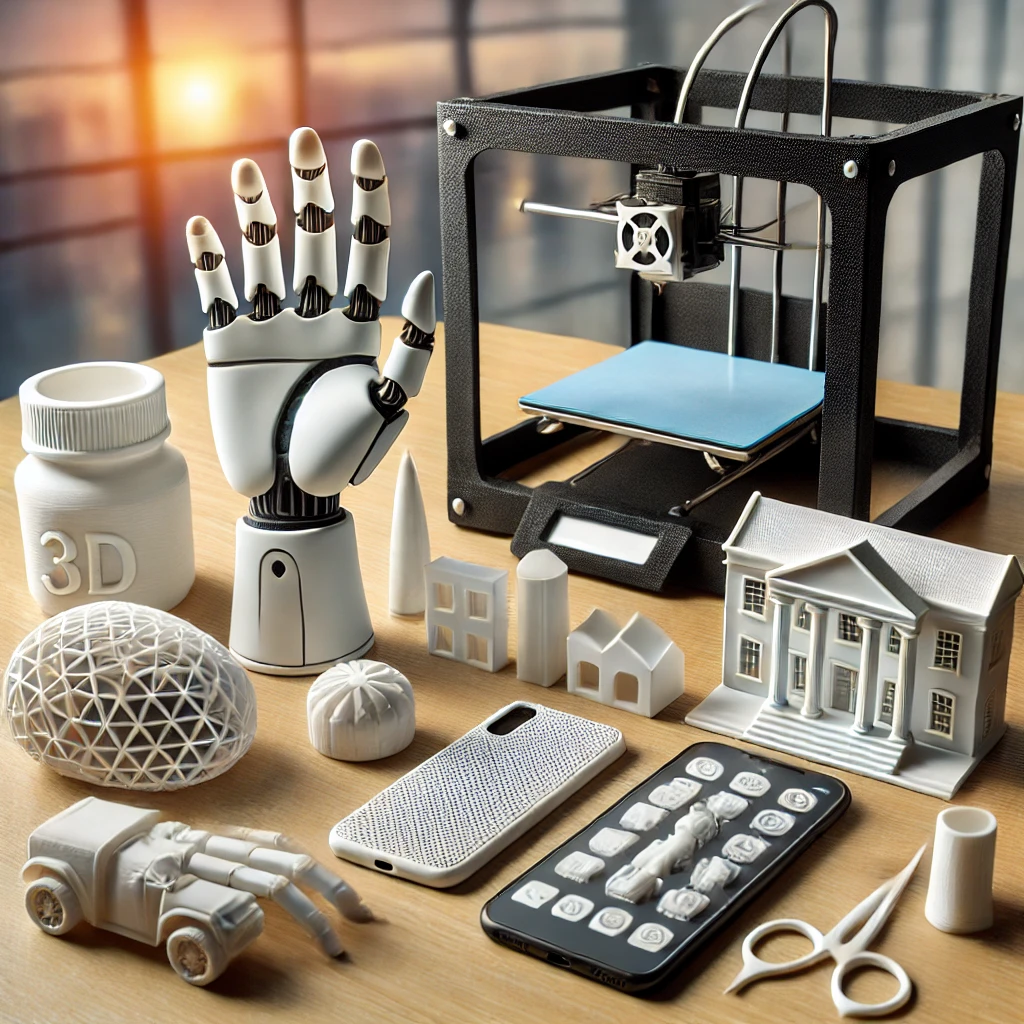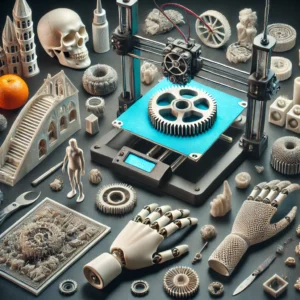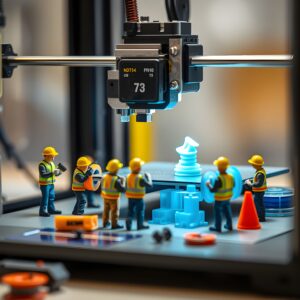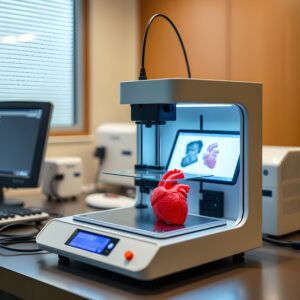Examples of 3D Printing: From Concept to Creation

Real-World Applications of 3D Printing
1. Healthcare: 3D Printed Prosthetics and Medical Devices
One of the most impactful uses of 3D printing is in healthcare. Custom prosthetics and implants can be printed based on the exact dimensions needed for patients. For example, 3D-printed hearing aids have become widely adopted due to their ability to perfectly fit individual ears.
2. Automotive Industry: Customized Car Parts
In the automotive sector, 3D printing is being used to create custom parts. Whether it’s rapid prototyping for new car designs or creating bespoke components for rare vehicles, manufacturers benefit from the cost-effectiveness and precision that 3D printing offers.
3. Architecture: 3D Printed Buildings and Models
Architects are leveraging 3D printing to create both miniature models and even full-scale building components. For example, several companies are experimenting with 3D-printed homes, which can be built faster and at a lower cost than traditional construction methods.
4. Fashion: 3D Printed Accessories
3D printing has found its place in the fashion world as well. Designers are creating intricate jewelry, eyewear, and even footwear that would be impossible to manufacture using traditional methods. Chanel’s 3D-printed mascara brush is a recent innovation in cosmetics.
5. Education: Enhancing Learning Through 3D Printing
In classrooms, 3D printing is used to bring lessons to life. Students can print models of historical landmarks, biological structures, or even their own designs, enhancing creativity and understanding in subjects like history, biology, and engineering.
6. Art and Sculpture
Artists have embraced 3D printing to bring their most ambitious ideas to life. Complex sculptures that would be too intricate to carve by hand can now be created with remarkable precision using 3D printing.
Advantages of 3D Printing in Various Fields
-
Customization:
From prosthetics to car parts, 3D printing allows for highly personalized creations. -
Cost-Effective Prototyping:
Companies can produce prototypes quickly and at a fraction of the cost, enabling faster product development. -
Reduced Waste:
Traditional manufacturing often leads to material waste, but with 3D printing, only the necessary materials are used. -
Innovation:
Artists, architects, and even educators are finding new ways to use this technology to push the boundaries of creativity and design.
Transitioning to a 3D Printed Future
The future of 3D printing looks promising, with advances in materials and techniques continuing to expand its applications. From bioprinting organs to creating sustainable housing, the possibilities are endless. Companies and individuals alike are exploring how 3D printing can solve complex challenges and create new opportunities.
Visit our other website: aibrainpowered.com




